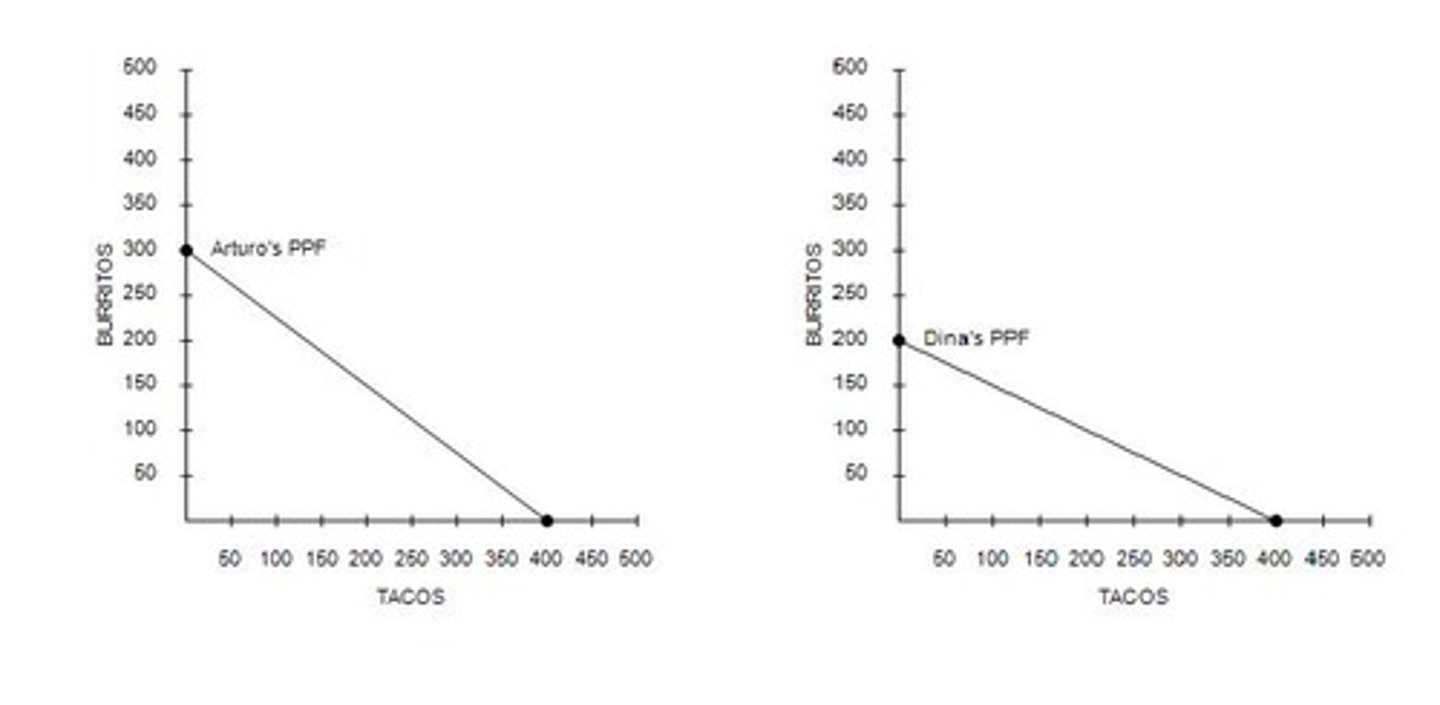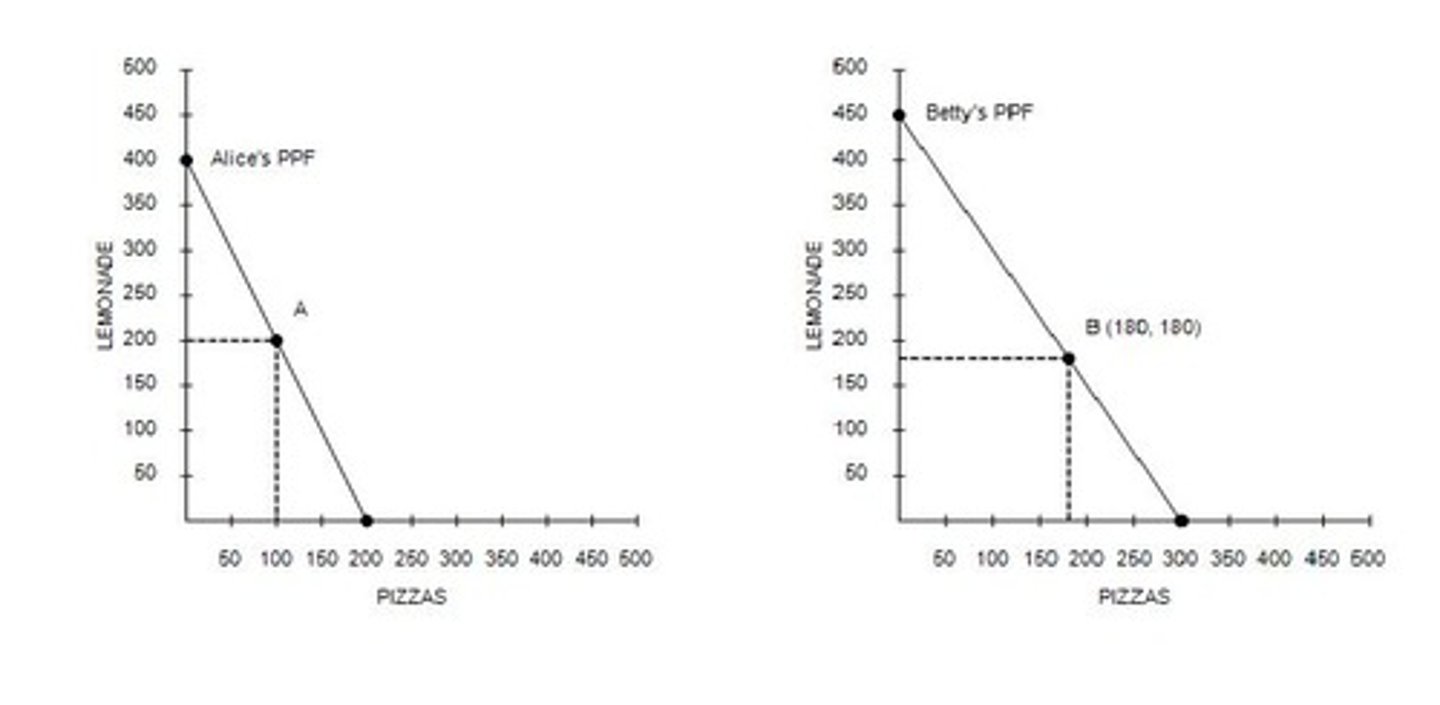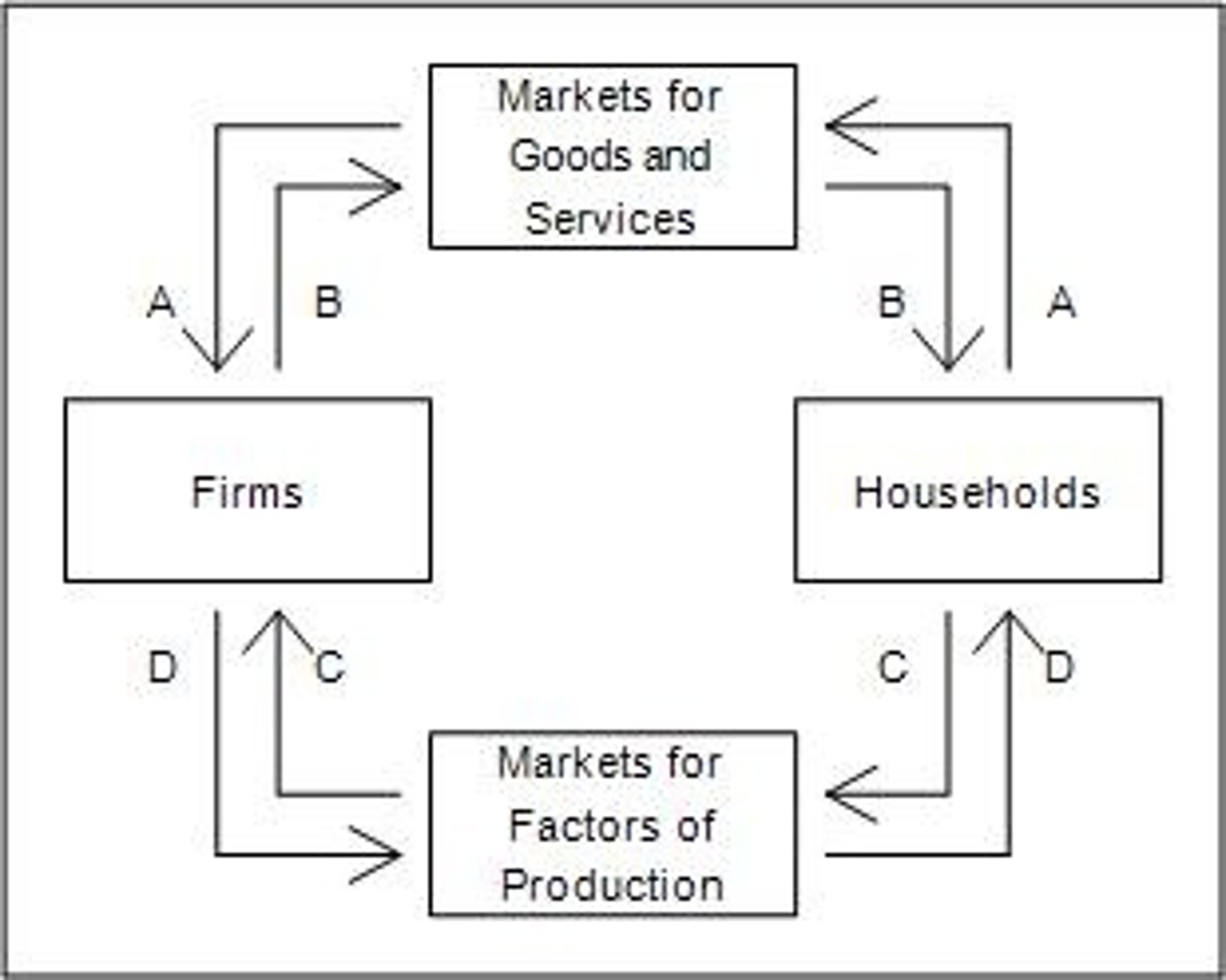Understanding Comparative Advantage and Trade Principles
1/92
There's no tags or description
Looks like no tags are added yet.
Name | Mastery | Learn | Test | Matching | Spaced |
|---|
No study sessions yet.
93 Terms
Absolute advantage
Found by comparing different producers' opportunity costs, payments to land, labor, and capital, input requirements per unit of output, and locational and logistical circumstances.
Producer with smaller quantity of inputs
Has a comparative advantage in the production of that good.
Comparative advantage
Determined by which person or group of persons can produce a given quantity of a good using the fewest resources.
Trade benefits
Can make everybody better off because it allows people to specialize according to comparative advantage.
Jamaica and Norway production
Jamaica can produce 12 coolers and 6 radios in one day; Norway can produce 24 coolers and 3 radios in one day.
Total output of radios increase
As a result of each country spending all its time producing the good in which it has a comparative advantage.
Opportunity cost of increasing emerald production
If Peru increases its production of emeralds by 2, the opportunity cost is 30 rubies, 40 rubies, 60 rubies, or 120 rubies.

Indonesia's opportunity cost of producing bananas
2.5 units of rice, which is lower than India's opportunity cost of producing bananas.
Comparative advantage in production
When a country has a comparative advantage in producing a certain good, it should specialize in that good and trade for other goods.
Labor hours needed for production
Indonesia requires 2 hours for rice and 5 hours for bananas; India requires 4 hours for rice and 2 hours for bananas.
Units produced in 40 hours
Indonesia can produce 20 units of rice and 8 units of bananas; India can produce 10 units of rice and 20 units of bananas.
Free trade benefits
Economists use the principle of comparative advantage to emphasize the potential benefits of free trade.
Country's opportunity cost
A country may have a comparative advantage in producing a good, even though it lacks an absolute advantage in producing that good.
Specialization and trade
Specializing in the production of a good and trading for other goods could allow a country to consume at a point beyond its production possibilities frontier.
Opportunity cost comparison
The opportunity cost of producing a good is compared to other countries' opportunity costs of that same good.
Production possibilities frontier
A graphical representation of the maximum output possibilities for two goods given a set of inputs.

Input requirements
The amount of resources needed to produce a certain quantity of goods.
Economic cooperation
Trade increases cooperation among nations.
Re-training workers
Trade may require some workers in an economy to be retrained.
Domestic competition
Trade reduces competition among domestic companies.
Output produced in one day
The specific quantities of goods produced by Jamaica and Norway in one day.
Production decision
The decision to increase production of one good often involves sacrificing the production of another good.
Economic efficiency
Achieved when resources are allocated in a way that maximizes the total output.
Resource allocation
The distribution of resources among competing groups or uses.
Trade Benefit
A. benefit both Celia and Ryan.
Production Possibilities Frontier
A. the combinations of output that an economy can produce.

Benefit of Specialization and Trade
B. consume more goods than we otherwise would be able to consume.
Production Hours for Jane
2 hours to make 1 bottle of wine.
Production Hours for John
3 hours to make 1 bottle of wine.
Production Hours for Jane (Bread)
1.5 hours to make 1 loaf of bread.
Production Hours for John (Bread)
1 hour to make 1 loaf of bread.
Production Scenario for John and Jane
A. The total production of bread and wine each rise.
Production Hours for England (Cheese)
1 hour to make 1 unit of cheese.
Production Hours for England (Wine)
4 hours to make 1 unit of wine.
Production Hours for France (Cheese)
5 hours to make 1 unit of cheese.
Production Hours for France (Wine)
2 hours to make 1 unit of wine.
Total Production for England and France
A. 8 units of cheese and 10 units of wine.
Production Hours for Aruba (Cooler)
2 hours to make 1 cooler.
Production Hours for Aruba (Radio)
5 hours to make 1 radio.
Production Hours for Iceland (Cooler)
1 hour to make 1 cooler.
Production Hours for Iceland (Radio)
4 hours to make 1 radio.
Total Production for Aruba and Iceland
A. 28 coolers and 50 radios.
Aruba's Production Possibilities Frontier
Which of the following represents Aruba's production possibilities frontier when 100 labor hours are available?
Zimbabwe
A country that can produce toothbrushes and hairbrushes with machine minutes needed of 3 and 10 respectively.
Portugal
A country that can produce toothbrushes and hairbrushes with machine minutes needed of 5 and 6 respectively.
Machine Minutes
The time required to produce one unit of a product, measured in minutes.
Toothbrush Production Rate (Zimbabwe)
3 machine minutes needed to make 1 toothbrush.
Hairbrush Production Rate (Zimbabwe)
10 machine minutes needed to make 1 hairbrush.
Toothbrush Production Rate (Portugal)
5 machine minutes needed to make 1 toothbrush.
Hairbrush Production Rate (Portugal)
6 machine minutes needed to make 1 hairbrush.
Total Production (Equal Time Division)
If each country divides its time equally between the production of toothbrushes and hairbrushes, total production is 48 toothbrushes and 24 hairbrushes.
Production Possibilities Frontier
A curve that shows the maximum feasible amount of two goods that a country can produce with its available resources.

Trade-off
The concept that producing more of one good requires producing less of another good.
Brazil's Cost of Peanuts vs Cashews
Brazil faces a trade-off between producing peanuts and producing cashews.
Time to Produce One Pound of Peanuts (Brazil)
It takes Brazil 1/10 hour to make one pound of peanuts.
Production Combination (Brazil)
In two months, Brazil could produce 5 pounds of peanuts and 150 pounds of cashews.
Time to Produce One Burrito (Arturo)
It takes Arturo 1/4 hour to make one burrito.
Total Production (Arturo and Dina)
If Arturo and Dina each divides their time equally between tacos and burritos, total production is 400 tacos and 250 burritos.
Constant Trade-off
Both Alice and Betty face a constant trade-off between producing pitchers of lemonade and pizzas.
Specialization Benefit (Alice and Betty)
Both would benefit from specializing in pizza production.
Alice's Lemonade Production
If Alice produces only lemonade, she can produce a certain amount (not specified in the note).
Alice's lemonade production
If Alice produces only lemonade, she can produce 200, 300, 400, or 450 pitchers per day.
Production at point A and B
If point A represents Alice's production and point B represents Betty's production, Alice produces 200 pitchers of lemonade and 100 pizzas while Betty produces 180 pitchers of lemonade and 180 pizzas.
Production at point A and B
If point A represents Alice's production and point B represents Betty's production, Alice produces 180 pitchers of lemonade and 180 pizzas while Betty produces 200 pitchers of lemonade and 100 pizzas.
Production at point A and B
If point A represents Alice's production and point B represents Betty's production, Alice produces 100 pitchers of lemonade and 200 pizzas while Betty produces 180 pitchers of lemonade and 180 pizzas.
Specialization and trade benefits
Under what circumstances can both Alice and Betty benefit from specialization and trade? Alice produces more pizzas and Betty produces more lemonade.
Specialization and trade benefits
Under what circumstances can both Alice and Betty benefit from specialization and trade? Alice produces more lemonade and Betty produces more pizzas.
Yvette's real estate decision
Yvette can go ahead with the $50,000 in repairs and then sell the house for $290,000, or she can forgo the repairs and sell the house as it is for $250,000.
Staying in college decision
In deciding whether or not to stay, you should compare the total cost of your education to the total benefits of your education.
Staying in college decision
In deciding whether or not to stay, you should compare the total cost of your education to the benefits of staying one more semester.
Staying in college decision
In deciding whether or not to stay, you should compare the cost of staying one more semester to the benefits of staying one more semester.
Staying in college decision
In deciding whether or not to stay, you should compare the total benefits of your education to the cost of staying one more semester.
Max and Maddy's parking pricing
At the current price of $10, seven people park on their lawn. If they raise the price to $15, they know that only five people will want to park on their lawn.
Max and Maddy's parking pricing
Whether they have seven or five cars parked on their lawn does not affect their costs.
Incentive response example
Students attend class because of an attendance policy that reduces their grade for absences.
Incentive response example
Consumers buy more of a product when it is on sale at a reduced price.
Online classes
Universities offer fewer online classes when they generate more revenue at the same cost than traditional classes.
Trade
Trade can make every nation better off.
Trade
Trade makes some nations better off and others worse off.
Trade
Trading for a good can make a nation better off only if the nation cannot produce that good itself.
Trade
Trade helps rich nations and hurts poor nations.
Specialization
Specialization allows specialization, which reduces costs.
Central planning
Central planning refers to government guiding economic activity.
Circular-flow diagram
A circular-flow diagram is a model that helps to explain how the economy is organized.
Factors of production
Another term for factors of production is inputs.
Simple circular-flow diagram
In the simple circular-flow diagram, households own the factors of production.

Markets for goods and services
In the markets for goods and services, households are buyers and firms are sellers.
Markets for factors of production
In the markets for factors of production, households are buyers and firms are sellers.
Outer loop of circular-flow diagram
The outer loop of the circular-flow diagram represents the flow of dollars in the economy.
Measured in dollars
Wages, income, and rent are measured in dollars and appear on the outer loop.
Jalyssa's participation
According to the circular-flow diagram, if Jalyssa is a worker who delivers flowers, she participates in the markets for factors of production exchanging labor for income.
Morgan's transaction
Morgan buys a refrigerator for his new home, contributing to the arrows in the circular-flow diagram.
Boxes in circular-flow diagram
If boxes A and B represent households and firms, then boxes C and D represent government and foreigners.